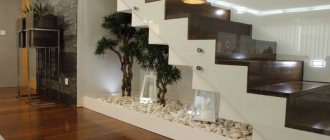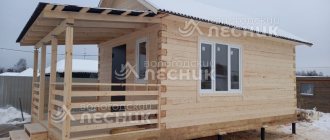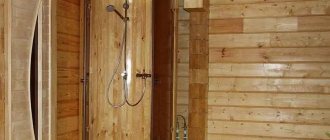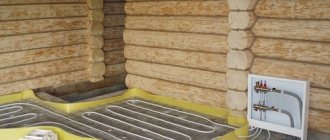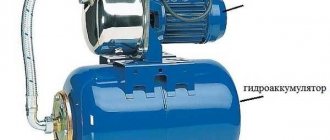In order to maintain a comfortable temperature in the main rooms of the bathhouse and ensure hot water supply, it is important to properly organize heating in the bathhouse from a heater located in the steam room, or use alternative sources. At the same time, each bathhouse owner can create an autonomous heating system independently, without involving outside help.
How to make heating in a bathhouse
Heating in the bathhouse is necessary to provide convenience.
One type of heating is automatic. Separate heating can be provided by electric convectors or electric boilers, as well as gas boilers. All of them can work offline. You can set it so that the room temperature is slightly above zero. This will prevent water from draining from the toilet tank, pipes, or electric boiler.
There is a minus in this system. Since it is autonomous, you may not notice that a failure has occurred and the temperature may drop below zero. Therefore, you need to install a temperature sensor with a signal.
How to install heating in a bathhouse from home
You can install both gas or electric boilers and stone or metal stoves. But these are all quite complex structures.
To heat a bathhouse from home, you can lay a heating main there. Install radiators in the house. Such a system will operate from heating in the house.
Heating a bathhouse from a sauna stove
The easiest heating method to manufacture, operate and maintain is heating a bathhouse from a sauna stove. The stove is installed directly in the steam room, and the firebox is installed in the dressing room.
Brick kilns maintain temperature for a very long time, but they must be heated for at least 5 hours. And it takes even longer to heat a bathhouse in winter.
High cost is another disadvantage. It is very difficult to build such a stove yourself. The help of an experienced stove maker is needed.
Heating the dressing room from a sauna stove
In most cases, a classic sauna is heated with one heat source. The stove is installed in the steam room so that all rooms can be heated. A tank of water is placed near the washing room.
It is very important that each element of the stove is made of refractory material. Therefore, it must be built from bricks
Such an oven will take up a lot of space and be large.
The ideal option would be a stove with a tank and an open heater. The firebox is equipped with a register, the lower edge of which is located 50 cm above the register. It will prevent premature boiling of water.
Is it possible to make heating from a tank?
To install a heating system from a tank, you need to know its operating specifics and operating rules. It is necessary to take into account the volume of the room and power consumption.
There are mounted and built-in tanks. There are also set-up tanks - a container of water is placed on top of a heated oven.
Comment! You can use the already created heat: a tank is hung on the chimney, the water is heated, and the temperature there can reach 500 degrees.
These methods do not supply hot water to the shower. Remote water tanks can do this. The heat exchanger is placed in the furnace, and a tank is hung next to it or in the attic. The system is connected by pipes through which water will flow. Thanks to the heat exchanger, it is heated and supplied to the shower through the tank. This heating system is simple and effective.
Overhead tanks are sealed containers with a lid and a tap for draining water. Attached to the wall using metal hooks. Made from stainless steel.
Attached water tank - an inclined pipe sealed at the end is welded into the furnace. The other end is at the bottom of the tank. Cold water rises through an inclined pipe, where it is heated to a boil. Hot air bubbles transfer heat.
How to make heating in a log bath
Three types of heating are installed in wooden houses: water, electric and air. Each has pros and cons.
The most popular type of log heating is water.
Pros:
- Economical.
- High heat capacity.
Minuses:
- Difficult to install.
- The need to constantly monitor the heat generator.
- In winter, be sure to drain the water from the heating system.
Such heating systems are:
- with bottom or top wiring;
- passing or dead-end;
- single-pipe or double-pipe;
- vertical and horizontal;
- with a pump or natural movement of water.
Two-pipe systems are less aesthetically pleasing than single-pipe systems.
Electric heating has several advantages:
- The heat supply level is easily adjusted.
- Small dimensions of heating devices.
- The heating is environmentally friendly and silent.
Air heating has only one advantage - high penetrating power.
But there are many more disadvantages:
- large stoves and fireplaces;
- very low heat transfer;
- uneven distribution of air in the room;
- expensive heating systems.
Before installing systems, you should weigh the advantages and disadvantages and possibly consult with a specialist in the industry.
Operating principle and distinctive features
The oven consists of several elements:
- Kamenka. Part of the unit where heat from hot stones accumulates. Heated with wood, electricity or gas.
- Firebox. A container where heat is released from burning fuel. Equipped with a grill, the location of which depends on the type of fuel.
- Lattice. Most often it is made of cast iron, as this material is resistant to high temperatures and durable during frequent and long-term use.
- Ash pit. A container placed under the firebox. Designed to settle ash.
- Passage tunnel with door. It is installed in the dressing room so that you can heat the steam room in the adjacent room.
- Heat exchanger. An element designed to transfer heat to water from the firebox.
- Tank. A container of water mounted to the stove, located on top or on the side of the device. It differs in volume and type of material.
- Chimney. A pipe coming out of the firebox and directing smoke to the street.
Tank stoves operate on the following principle. Firewood is placed in the firebox to generate heat. The heated air rises through and heats the stones. They heat up and maintain the required temperature in the room. In addition, the tank heats up.
The speed of heating the water depends on the location of the tank. It may be located near the stove or in an adjacent room. To maintain the water temperature, you need to periodically add firewood.
There are stoves with long burning times. They work without adding firewood for up to 20 hours, which eliminates constant monitoring during operation of the device. The combustion process in such cookies occurs in the opposite direction - from top to bottom.
Selection of equipment for heating a bath
Sauna stove design
A modern stove for baths and heating can be of several types. But regardless of this, the structure must perform its main functions - heating the steam room and the coolant in the heating system.
There are several possibilities to implement this system in practice. If there is already a brick stove in the bathhouse, you can modify it. To do this you will need the following:
- Heat exchanger adapted to the firebox. Most often this is a home-made design, made to order according to the calculated dimensions. For this, heat-resistant steel with a thickness of at least 2 mm is used;
- Gas-burner. Its dimensions must be adapted to the dimensions of the combustion chamber of the sauna and heating stove. Otherwise, you will have to rebuild the firebox design.
It is best to choose models with flame modulation, as they can smoothly change the operating power, thereby regulating the degree of heating of the heater and coolant.
Gas-burner
To fully heat the attic of a bathhouse or the second floor of a building, it is recommended to purchase a factory-made gas boiler with a heat exchange device. Such models are characterized by reliable operation, high efficiency and safety.
Before installing gas heating in the bathhouse, the boiler power is pre-calculated. Manufacturers usually indicate the maximum and minimum volume of the steam room for each model. However, in addition to this, it is necessary to install water heating in the dressing room and other rooms. Therefore, in addition to the rated power, the area of the entire bath should be taken into account. Given good thermal insulation, you can use the formula:
W=(Qb-Qp)*41
Where W is additional power, W, Qb is the total volume of the bath, m³, Qп is the volume of the steam room, m³.
As an example, let’s calculate the additional power of a combined furnace for heating and steam room. The total volume of the building is 162 m³. The same figure for the steam room is 24 m³. Then the additional power required will be as follows:
W=(162-24)*41=5658 W or 6 kW.
In addition, when installing gas heating for a bath, you need to take into account the cost of the equipment. It all depends on the chosen circuit, power and budget.
| Model | power, kWt | Cost, rub. |
| Gas burner Sakhalin-2 | 26 | 12000 |
| Ermak gas stove | 12 | 20160 |
| DHW tank, 80 l. | 7515 | |
| Electric heater Helo LUMI 90 ST | 9 | 22350 |
For winter heating of the bathhouse, it is recommended to install a full-fledged heating system. This is especially true for regions with low temperatures in winter. But in addition to this, the specifics of installing the heating system are taken into account.
Warm floor system
This option for heating a bathhouse is one of the modern methods, which has been used frequently in recent years. It is quite difficult to install special equipment without the appropriate experience.
It is much easier to install an electric floor system and you can do this work yourself:
- First of all, a waterproofing material is laid, on which a layer of mortar is placed.
- Next comes the installation of thermal insulation.
- An electrical cable is mounted on top of the thermal protection layer and the screed is refilled.
The technology for creating a floor with water heating is similar, but in this case they do not use a cable, but rather lay pipes to circulate the hot coolant.
Heating main: to decide or not?
Installing a boiler in a bathhouse is always a bit of a hassle. In a good way, we need a project - and an approved project, and this is bureaucracy. But even without it there are enough problems: it’s expensive, proper installation is needed, various safety measures are needed... That’s why some bathhouse attendants are in favor of installing a heating main from the house. But there are some nuances here that you need to be aware of.
Firstly, there is no guarantee that groundwater will not accumulate at the pipe site at certain times of the year. Secondly, the heating main must be insulated - this is also an expense. Thirdly, if it is necessary to heat a bathhouse in winter in a trench, then all the pipes will have to be laid in a single pipe of a sufficiently large diameter - this is the only way to isolate communications from groundwater. But you can control the heat in the steam room using a simple remote control from home - and this is comfort.
But, no matter what alternative heating method is chosen, the main thing is to calculate everything in advance, and, if possible, invite a specialist: an experienced eye in this matter will not hurt.
Gas heating of the bath
If it is possible to connect to the gas supply system, this type of heating will provide effective heating (more details: “Advantages of a gas sauna stove and its modifications”).
Advantages of gas heating:
- environmental Safety;
- use of equipment that is easy to operate and maintain;
- cheap heating method.
Gas boilers for heating baths, even in winter, in case of prolonged non-use, can heat the room to the desired temperature within several hours, depending on the area of the room.
The operation of a gas furnace is similar to that of an electrical structure. The gas burns in a special chamber located under the stones. As a result, not only they heat up, but also the room and the water in the container warm up.
Pros and cons of installation
This design has the following advantages:
- electromagnetic radiation will not have its negative impact, which is inevitable when using electrical energy;
- this design is completely environmentally friendly;
- helps to heat the room more evenly;
- saving resources;
- fungus and mold do not receive a favorable environment for reproduction;
- There is no risk of a draft, since the entire steam room heats up evenly.
Let's move on to the disadvantages:
- the bathhouse is not constantly heated and there is a risk of pipes freezing, which can lead to failure of the entire system, so there is a need to drain the water from it every time;
- the heat exchanger consumes a lot of energy, which it takes from heating, therefore, if there is no adequate power reserve, the room may take longer to heat up;
- the volume and time of heating water will depend on how many adjacent rooms need to be heated;
Water heating design
Installing water heating is considered a convenient and fairly effective way to provide heat to a bathhouse. For this heating method, you can use wood, gas, or electricity as fuel, since this depends on the modification of the fuel boiler that will be installed.
The best choice of heating unit would be a cast iron boiler for liquid coolant. The water is heated in it, flows through pipes into radiators installed in the bathhouse building, and after heat is transferred, it returns to the boiler. The water system allows you to heat any room evenly and efficiently. In the same way, you can organize the heating of a bathhouse from your home.
Termofor - a good choice of sauna stoves and home heating
Termofor is considered the undisputed leader in the manufacture of heating stoves and sauna stoves. Siberian thermofor stoves were first developed in Novosibirsk by 2 men who really loved taking a steam bath. But the units turned out to be so magnificent that they were put into mass production.
Today, thermophores have won special love not only among residents of Russia, but also among foreigners. The company's products are successfully exported to the European Union and CIS countries; the domestic Ministry of Emergency Situations has also become a fan of Thermofor stoves.
Why do we choose Termofor?
A good choice for a real Russian bath is Termofor Stoves. They ask for solid fuel: wood or coal.
By the way, some variations are designed specifically for travel, which allows you to arrange a bathhouse in any place.
Thermofor sauna stoves have a sufficient service life due to the fact that chromium-alloyed steel is used for their manufacture. Chromium significantly increases the heat resistance of the alloy.
The thermofor sauna stove quickly heats up the stones and air. A cast iron grate supplies air to the fuel. In this case, as in the working principle of furnaces, a powerful flame of very high temperature is formed during the exhaust process. The heating surfaces of the stove heat up quite quickly, as they are made of fire-resistant steel.
This specificity of the material made it possible to reduce the thickness of the surfaces to 2 millimeters, without damaging the resource. Due to this, options made of cast iron equipment are used more often.
Equal heating of the entire bath
Only thermofor stoves are able to quickly warm up the air volume in a sauna. A hot and powerful convection flow, based on the principle of convection ovens, created by a convector casing, heats the steam room equally. Such a stove is not considered a source of hard heat radiation. The hard rays that come from the hot furnace are shielded by the same convector casing, so there is no danger to human health.
Equipment from Termofor tends not to burn excess oxygen from the air. This can be explained by the fact that its walls are chemically inert, which does not help oxidation under the influence of high temperatures. In addition, metal and cast iron bath stoves produce good steam. The deep heater of such stoves is not ventilated and is heated by fire from several sides. To burn the gases around the heater, secondary air is supplied through specialized channels. In this case, secondary combustion torches are obtained, which helps to better warm up the stones.
Termofor stoves – choose the best!
In a bathhouse with a thermofor stove there is no need to steam the broom in boiling water. Now you just need to hold the soaked broom on the steam that comes up from the hot stones. In addition, combustion can be controlled visually. This is due to the fact that most thermofor models are equipped with a transparent screen made of fire-resistant glass. With its help, you can not only adjust the fire, but also enjoy its view.
There is no need to clean the oven from soot. The production workers were worried about this. All places where there is a possibility of soot accumulation are burned with an open fire using specialized slots. And the appearance does not change for a long time. The outer surfaces of the units are painted with organosilicate enamel, which is resistant to high temperatures. Under any circumstances, if a production stove is not cheap for you, then you can always create a sauna stove with your own hands.
Sauna stoves and more...
The Termofor company creates stoves not only for baths, but also for heating premises. Thermofor heating stoves allow you to quickly warm up a room. Units for heating a home have similar positive qualities as stoves for baths. It is also necessary to say a few words about the price of the Thermofor stove, which is not as exorbitant as that of most other manufacturers.
But their purpose is somewhat different - they only heat the space, without the need to heat the stones.
Every person can use the Thermofor heating stove, as it is easy to use.
Excellent heating and bathing units are made in the north. And the Termofor company is proof of this. Its products are designed taking into account the peculiarities of the Russian climate. What makes thermofor stoves so special is that their prices are outrageous. Any person who likes to take a steam bath will first of all appreciate the quality and design of the stoves
Don't forget about safety
But it is not advisable to install electric heated floors in the steam room itself. Yes, this will make going to the bathhouse more comfortable. After all, true connoisseurs of baths know that it is the floors, especially in winter, that can remain cool even after heating for many hours. All the heat rises, and near the ceiling the temperature can reach 70-80 degrees, but the floors will remain cool. This definitely won’t happen when using electric heated floors - they will heat up much faster than the bathhouse will heat up.
But do not forget that in the steam room, liters of water are spilled on the floor every minute. But water and electricity are not compatible. Of course, the electrical cable is mounted in a concrete screed, on top of which boards are laid. Yes, the cable is supplied with all the necessary insulation, which guarantees maximum safety.
In this state of affairs, an unfortunate combination of circumstances is enough for you, your loved ones or guests to receive an electric shock. How can this end? The consequences can be the most tragic. Therefore, despite all the persuasion of experts, you should not install heated floors in the steam room, at least not electric ones.
Moreover, not all bathhouse visitors tolerate the heat equally well. And the bathhouse, in combination with the laws of physics, seems to specifically provide for such an option. People who love steam and heat can sit on the top shelf, and those who just went for company or have heart or blood pressure problems can sit on the shelf below - there they will feel more comfortable.
Gas stove in the bathhouse
Foundation for a gas furnace
We build the foundation of a gas bath stove in the following sequence:
- We dig a pit 70 cm deep, taking into account that the bottom of the pit should be slightly wider than the base.
- We pour 15 cm thick sand into the bottom of the pit, fill it with water and wait until the water is absorbed.
- After the water has been absorbed, pour pieces of brick and stone about 20 cm thick.
- We fill it all with crushed stone.
- We make formwork and create a reinforced frame.
- Fill it with concrete and wait until it sets a little, then remove the formwork.
- We cover the surface in several layers with tar.
- We fill the place where the formwork was with a mixture of sand and fine gravel.
- We install moisture insulation and the foundation is ready for the construction of a gas furnace.
Construction of a gas stove for a bath
The procedure for making a gas stove for a bath looks like this:
- Prepare a solution of sand and clay in a 1:1 ratio. Mix all this with water until a homogeneous mass without lumps is formed.
- Before laying, soak the brick in water for 10 minutes.
- We lay the first layer of brick on the bitumen that we previously placed on the foundation. After laying the first row of bricks on the mortar, let it rest for a couple of minutes.
- We lay the second and subsequent rows so that each brick lies on the joint between two bricks of the previous row. Make sure that the seams are no more than 5 mm thick.
- In the process of laying the third row, you can make a door for the blower. Use strips of steel or galvanized wire to secure the door.
- In the fourth row we create a hole for ash measuring one centimeter.
- In the sixth row we finish with the installation of the blower, and in the seventh we install the door for the firebox and grate.
- Eighth row - we make a partition for the chimney and continue laying bricks until the channels are placed in the 14th row.
- We install the water tank on the channels so that it is located on the front wall, and the side walls support it vertically.
- The fifteenth row is the basis for a separate wall, so we put it in half a brick. We also place the next three rows.
- We install the steam release door in the nineteenth row.
- Between the 20th and 21st rows we place strips of steel, then we install a hot water tank.
- The chimney is installed starting from the 23rd row. Remember that the pipe should rise half a meter above the roof, and the thickness of the pipe itself should be half a brick.
When the work with the furnace masonry is completed, we move on to plastering. We clean the walls of the oven from excess mortar and plaster with a mixture of sand, clay, gypsum and alabaster.
Using a gas stove in a bathhouse
- We recommend burying the liquefied gas cylinder on the street near the bathhouse.
- Be sure to install an automation system that will regulate the fuel supply and when to turn it off.
- Once the stove is ready, allow it to dry for at least two weeks, and after the first lighting, do not immediately bring it to high temperatures.
- Make sure that the fireproof base under the stove extends 100 mm beyond the boundaries of the stove.
- The gas pipeline to the stove must be made of steel or copper.
[media=https://www.youtube.com/watch?v=sksy3S3036w]
Solid fuel boilers
A special place is occupied by combined boilers using liquid or solid fuel. The option is economical, but not entirely profitable. The price of liquid fuel is constantly increasing, so installing heating in a bathhouse that works on this principle is not entirely profitable. It is more economical to use firewood or coal. But in this case, you need to understand that they will have to be delivered frequently, and the area with the bathhouse must be available at any time of the year. And still the same drawback: “autonomously” such boilers only work for a few hours. For heating baths located in suburban areas, this is not a solution.
Solid fuel boilers. Possible, but not ideal
Today, a combined bath heating system is becoming more and more common. For this purpose, multi-fuel boilers are used. In the absence of any type of fuel, it simply switches to electricity. But these boilers are only suitable for water heating, and it is difficult to install. But having set a goal, almost every person with minimal experience will be able to create a heating system in a bathhouse with their own hands and set it up uninterrupted.
Mixed
In the case when you do not often use the bathhouse (especially in winter, rarely coming to the dacha), then the most optimal option would be a mixed heating device. For example, a stove is installed and electric heating is installed. If you decide to take a shower, rest or “stretch”, use electricity. If you decide to take a steam bath “like an adult”, turn on the stove thoroughly.
Remember. Whatever the heating in the bathhouse, if you do not use it constantly in winter, then be sure to drain the water from boilers, water heaters, pipes, toilet tank (if there is one), etc. This is guaranteed to protect them from damage, and you from unnecessary headaches.
Heated floor control unit
Gas heating
The implementation of such a heating system has several options.
- Firstly, as I wrote above, it is possible to install a “classic” heater, in which a gas burner will be used instead of firewood.
- Secondly, you can use a standard gas boiler (the same as in residential buildings). But in this case, you will have to take care of the equipment of heating systems (installation of heating radiators, laying pipes, connecting a gas-carrying pipe to the bathhouse or a cylinder connection system).
- Thirdly, there is the possibility of installing heating from the house. In essence, this is the same option as the previous one, but with its own characteristics and disadvantages. A separate heating main is laid from the boiler used to heat the house to the bathhouse. This option is very convenient if your steam room is adjacent to the house or is very close to it.
Gas heating baths
If the distance to the bathhouse is relatively large, then in order to use this system in winter it is necessary to bury the heating main below the freezing level of the soil and insulate it well. This will prevent the possibility of defrosting and help reduce heat loss.
True, the undoubted advantage of this option is the complete elimination of the problem of maintaining a constant positive temperature in the bathhouse. In addition, you can do all the necessary work (if you have a certain skill) with your own hands.
Water heating is rightfully considered one of the most convenient and effective methods of heating. In such a situation, there are also several options for manufacturing a system, which in any case will be powered from a furnace with a water circuit.
Fortunately, today in specialized stores you can easily select stoves that are ready for installation, equipped with a heat exchanger. This greatly simplifies the task of any builder of his own bathhouse. And now directly about the options.
Water heated floors
- External heating. It is done very simply and, in fact, is arranged in the same way as a brownie. Pipes located along the walls are connected to the furnace. Depending on the area of your bathhouse, a certain number of heating radiators are connected to the pipes. Hot water passing through them heats the structure and, when cooled, returns back to the boiler.
- Water heated floor. The principle of its operation is the same as in the first option. The only difference is that the pipes are hidden in the floor, which was previously insulated (I wrote about insulating floors in a bathhouse in more detail in other articles). This design is considered non-separable (although, of course, there would be a desire to break everything), and therefore requires a very careful approach to the procedure for its manufacture. In this case, I would recommend seeking help from specialists.
Electrical
And finally, let’s look at several ways to use electricity to heat a bathhouse. I’ll say right away: take care of the electrics in this case. Since the load on thermal electrical appliances is large, the quality of the electrical wiring should not be in doubt. Consider the total load, wire cross-section, wiring diagram and quality of electrical work.
Electric heating
Firstly, your room can be heated using an electric heater. True, in this case you will have to take care of heating the water in the shower in advance (for example, by installing a direct or indirect heating boiler). This type of heater does not require additional arrangement of the chimney and is considered environmentally friendly.
Secondly, the bathhouse (in particular the relaxation room) can be heated using electric convectors placed on the walls.
Well, thirdly, infrared film can come to your aid - the newest type of heater, which allows you to easily and quickly create warm floors both in the house and in the bathhouse. Detailed technology for installing heated floors is discussed in other articles.
Please note that the installation of heated floors is possible without the use of infrared film, but by laying electric heating cables. They are used both in underfloor heating systems and for heating water pipes.
It is quite possible to use infrared heaters as an additional source of heat. I hung it on the ceiling and forgot about it.
Infrared heaters
Using electricity to heat a bath undoubtedly has its advantages. You can safely use all the structural elements (heater, heated floor, boiler) at any time all year round. At the same time, you don’t have to worry about fuel or worry about pipes freezing. The only serious drawback can be considered the high energy consumption.
One oven will not be enough
Our climate rarely allows heating a bathhouse exclusively using a stove. If you plan to use it all year round, you will have to think about integrated heating. And questions immediately arise about how to make heating in the bathhouse so that it is not cold, even if no one is steaming.
https://youtube.com/watch?v=ch0X55ttLsQ
You can choose a heating boiler as a constant source of heat (and warm water). Moreover, it is not necessary to buy a separate boiler for a bath; a home-made one, from which you simply pull a thread, will suffice.
The resulting hot water is released into radiators or into a heated floor system. Technically, this allows us to solve the issue of heat and water supply at the same time.
The question of which boiler is better to choose depends on which fuel is more accessible. When there is a gas main nearby, a sauna with gas heating is the most suitable option. If a separate boiler is planned, gas is diverted from the house to the bathhouse. All work, including design work, is carried out only by specialists from the gas service; they will also connect the boiler. All that remains for you to do is organize the water supply system and install heating throughout all rooms of the bathhouse.
If there is no gas nearby, but electricity is supplied without interruptions, the choice will clearly be made in favor of an electric boiler. Be prepared for big bills, because the sauna needs to be heated constantly, albeit with different intensities. But the electric boiler works in the “smart home” system and can be activated remotely. True, in rural areas, problems with electricity are more the rule than the exception.
There are boilers that use solid fuel (pellets). If such a boiler is in the house, it makes sense to purchase a similar one for the bathhouse, so as not to stock up on 2 different types of fuel. Although the equipment itself is quite expensive, the possibility of automatic feeding and the low cost of fuel are captivating. Ignition requires electricity, but not much.
Heating main: to decide or not?
Installing a boiler in a bathhouse is always a bit of a hassle. In a good way, we need a project - and an approved project, and this is bureaucracy. But even without it there are enough problems: it’s expensive, proper installation is needed, various safety measures are needed... That’s why some bathhouse attendants are in favor of installing a heating main from the house. But there are some nuances here that you need to be aware of.
Firstly, there is no guarantee that groundwater will not accumulate at the pipe site at certain times of the year. Secondly, the heating main must be insulated - this is also an expense. Thirdly, if it is necessary to heat a bathhouse in winter in a trench, then all the pipes will have to be laid in a single pipe of a sufficiently large diameter - this is the only way to isolate communications from groundwater. But you can control the heat in the steam room using a simple remote control from home - and this is comfort.
But, no matter what alternative heating method is chosen, the main thing is to calculate everything in advance, and, if possible, invite a specialist: an experienced eye in this matter will not hurt.
Rules for organizing heating in a bathhouse
Wood heating sauna
The simplest option is a sauna with heating from home. This scheme involves connecting the steam room, dressing room and other premises to the autonomous heat supply of the cottage. But this can only be realized if the bathhouse structure is closely adjacent to the house or is located at a distance of no more than 3-4 m from it.
The most common option for the location of a building on a site is remote from a residential building. How to make water heating in a bathhouse and at the same time optimize the costs of its organization? Options for using standard schemes are possible, but at the same time the specifics of using the bathhouse should be taken into account:
- The source of thermal energy (boiler) must ensure heating of the air in the steam room to a level of +90°C +100°C. For this purpose, special sauna stoves with a container for stones are used;
- For rooms larger than 60 m², it is recommended to install pipe heating. Together with it, you can make a hot water system to increase comfort. If there is a second floor, heating of the attic of the bathhouse must be provided;
- Ensuring the removal of carbon monoxide along with a well-thought-out ventilation system;
- Fire safety. Since wood is used in the vast majority of cases for finishing rooms, its contact with heating elements - pipes, radiators - should be prevented.
Gas heating baths
Another important point is the choice of energy carrier. Gas heating in a bathhouse is advisable only when installing a specialized boiler. Installing homemade structures can lead to emergency and dangerous situations.
In addition to gas, you can use other, no less effective sources of thermal energy:
- Firewood. A traditional type of fuel with which heating a bathhouse in winter turns into a kind of ritual. A significant drawback is the constant monitoring of the fuel level in the firebox, as well as the impossibility of quickly adjusting the water heating level;
- Diesel fuel or used oil. The most unacceptable energy source for a bathhouse. The problem is the unpleasant smell and the difficulty in organizing fuel storage.
How to make gas heating for a bathhouse yourself? To do this, you need to choose the right equipment and components for heat supply - pipes, radiators, as well as containers for indirect heating of hot water.
When heating a bathhouse from the heating system of the house, part of the pipeline located on the street must be insulated. To solve this problem, you can use special heat insulators or an electric heating wire.
The second option for solving the gasification problem
Everything is quite complicated and inconvenient. Allocating part of the living space in a private house to a bathhouse is not very convenient and is not always possible. A separate construction of a sauna in the local area looks much more attractive from both an economic and consumer point of view. Therefore, the problem of how to supply gas to the bathhouse is often solved from the end of the problem.
In this case, the algorithm of actions is reverse. Initially, you will need to select the most suitable bathhouse design. The idea is to build a residential guest house or summer kitchen in the local area, which can easily be converted inside into a full-fledged bathhouse. On a solid foundation, with walls made of non-combustible materials, with mineral fiber insulation.
Oddly enough, it is much easier to obtain permission to gasify a kitchen, house or outbuilding than to supply gas and install heating equipment for a bathhouse.
Therefore, first of all, we obtain permission from the architectural bureau to build a house. Next, a project is drawn up for a room with a sewerage system and a shower heated by a boiler installed in the kitchen section of the house.
Advice! But even in this case, in the design documentation it is necessary to plan and provide for all the fire safety elements that a full-fledged bathhouse should have. First of all, this concerns the materials used for walls, ceilings and the method of insulation.
Let's sum it up
As it turns out, heating a sauna with electricity is an excellent solution for those who use a steam room all year round.
It has a number of advantages:
- Environmental friendliness. Burning wood releases huge amounts of carbon dioxide into the atmosphere. If ventilation is poor, visitors to the steam room may also inhale carbon monoxide. In the case of electricity, such a problem cannot arise.
- Practicality. Optimal temperature conditions are maintained throughout the year, and control lies entirely in the hands of the owner. An autonomous heating system will prevent the appearance of fungus and protect the room from freezing.
- Easy to install. To build an ordinary stove, you will have to find an experienced stove maker, and only professionals are allowed to install a gas boiler. Electric heating is much easier to install, so the help of a specialist is not required.
The advantages are obvious, but there are also several disadvantages. Firstly, during power outages, heating will not be provided, and secondly, electricity tariffs are quite high.

